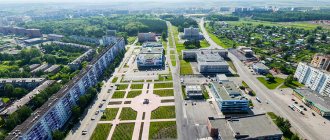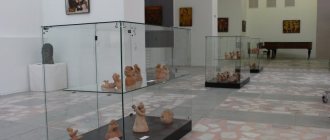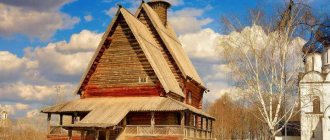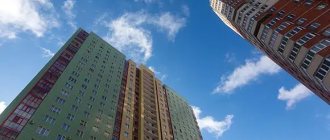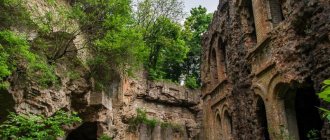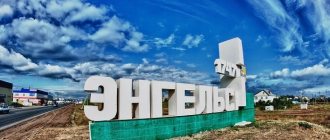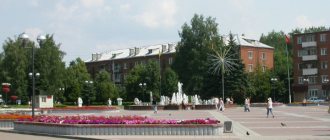Vyborg is rightfully one of the most beautiful cities in the North-West of Russia. It grew out of a fortress built in 1293 on Castle Island by the Swedes to control the waterways from the Gulf of Finland to Ladoga. The history of the policy is eventful. At different times it was owned by Swedish kings and Russian tsars. After the October Revolution, the city went to Finland, and the Second World War returned it to Russia. Today it is an important industrial and logistics center of the region. Numerous attractions of Vyborg, photos and descriptions of which are presented in the article, attract hundreds of thousands of tourists.
Vyborg Castle
Vyborg Castle is the main attraction of the city. Construction of the fortress began at the end of the 13th century, when, as a result of the crusade, this territory was occupied by the Swedes. The castle was completed several times: new defensive walls and towers were erected.
Vyborg Castle
It’s best to start visiting Vyborg Castle with a walk around the island itself. Here you will see buildings located along the fortress wall: the Shoemaker's Tower, the Paradise Tower, several buildings, a prison, a blacksmith's yard. Pay special attention to Olaf's Tower - the first tiers are the oldest buildings of the castle.
Olaf's Tower recently reopened after renovation. Now visitors can look at the city from a 75-meter height.
Vyborg Castle is a place where you can learn about the history of the region since ancient times. There are several museums on the territory where you can learn about the nature of the Karelian Isthmus, unique underwater finds of archaeologists, visit real prison casemates or see an interactive exhibition dedicated to the history of knights.
The exhibition in the Knights' Hall will be especially interesting for children, since here they can not only see the weapons of knights, but also try their hand at fighting with replicas of medieval swords or archery.
In the museum complex you can attend real master classes, where they will tell you about pottery or demonstrate how blacksmiths work. Those interested can listen to lectures about the history of the region, its architecture, and events.
The announcement of events is presented on the official website of the museum complex.
Address: Castle Island, 1. Buses from the bus station No. 1, 6, 12. Ticket prices: from 400 rubles, discounts for schoolchildren and students. Interactive platforms, exhibitions from 100 to 300 rubles. Opening hours: Castle Island is open daily from 9.00. until 19.00. The museum is open from 10.00. until 18.00. Day off is Monday. Phone number for inquiries: 8. Official website: https://vyborgmuseum.org/
Alvar Aalto Library: for connoisseurs of functional architecture
Address: Suvorovsky Prospekt, 4 Telephone: 8 (81378) 2-11-53; Website: https://aalto.vbgcity.ru/ Opening hours: 11:00-19:00, Saturday - 12:00-19:00, Sunday - closed. The last day of the month is sanitary. Cost: free visit. Excursion in Russian 150 rubles, excursion in English 350 rubles. Cash payment
A unique architectural monument from Alvar Aalto, a Finnish architect whose projects have gained worldwide fame. A visit is recommended for those interested in the history of early twentieth-century architecture. The library was created by mixing and flowing into each other neoclassicism and early modernism.
Panoramic view from the inside:
The architect created a space designed for books the way water is for fish. The functionality of the library according to the criteria of careful storage of paper books is combined with the almost temple solemnity of the reading rooms and halls. Taking the waves of the bays surrounding Vyborg as the main idea, Aalto created a unique wavy ceiling of the main reading room. The ceiling was restored at the beginning of the 2000s. The acoustics of the hall and the beauty of the ceiling were preserved.
From the outside, the library looks a bit dry and does not attract attention.
Cathedral of Saints Peter and Paul
Construction of the cathedral began at the end of the 18th century after representatives of the city’s German community addressed the empress. The construction of the temple and its improvement were carried out with donations from parishioners.
Cathedral of Saints Peter and Paul
For a long time, the Lutheran church was a place of worship where services were held. An organ was installed. Unfortunately, during Soviet times the church was converted into a club, and the altar and organ were irretrievably lost. And only at the end of the 20th century the temple was returned to its original appearance and status. Regular services are now held here. The interior was reconstructed, the bell tower was restored.
The cathedral hosts concerts of organ music, chamber orchestras and vocalists. You can read about the events in the official group https://vk.com/club92760256 Address: st. Pionerskaya, building 6
Spaso-Preobrazhensky Cathedral in Vyborg
The Transfiguration Cathedral is an active Orthodox church, the construction of which began at the end of the 18th century. Until the 20s of the 20th century, it belonged to the Russian Orthodox Church, but after several decades the cathedral was transferred to the Finnish Orthodox Church, which caused discontent among city residents and led to the fact that after the war the temple was returned. But the devastation and ruin that reigned in it at that time did not allow it to become immediately operational: it took several years to restore.
Transfiguration Cathedral
At the beginning of the 21st century, the clock that adorned the bell tower was returned to the cathedral. They were once removed because they rang too loudly.
The interior of the cathedral retains a strict and solemn appearance thanks to the work of restorers who managed to preserve and restore the unique paintings and ancient icons.
Address: pl. Sobornaya, house 1
Exhibition
The exhibition center was opened relatively recently, in 2010. Previously, one of the best museums in Finland was located on this site, but after the war the building was converted into a local history museum, which, in turn, existed for a relatively short time - the premises turned out to be in poor condition, the exhibition was transported to another place.
Exhibition
Now the Hermitage-Vyborg is an art museum that displays works of art, dishes, weapons, and antiques from the collections of museums in St. Petersburg and Europe.
The advantage of the Hermitage-Vyborg Museum is its ability to host thematic temporary exhibitions within its walls, which makes it possible to see constant updates of the exhibitions.
Near the Exhibition Center you can walk along the Sculpture Alley. Copies of sculptural compositions from the Summer Garden, parks and museums of the northern capital are presented here. Famous statues blend seamlessly into the landscape of the park surrounding the exhibition center, giving visitors the opportunity to experience art in the lap of nature.
Address: st. Ladanova, 1. Ticket price: adult - 150 rubles, pensioners - 80 rubles, schoolchildren, full-time students - free, audio guide - 50 rubles. Opening hours: from 10.00 to 18.00. (7 days a week) Phone for inquiries: 8-813-782-72-82; Official website: https://erm.vbgcity.ru/
Where can you go nearby on the weekend?
Where to visit Mon Repos Park: interesting places
It will take several hours to walk through Mon Repos Park, and it is located at a considerable distance from the center. Therefore, I advise you to come to the park separately or visit it on the second day of your trip to Vyborg and the surrounding area.
Mon Repos Park is located on the estate of the barons von Nicolai, who were engaged in education and diplomacy. The territory of the rocky landscape park-reserve is 160 hectares. In the summer, festivals and concerts are held in Mon Repos Park.
The romantic place of the park is Ludwigstein Island and the white chapel topped with four small towers in the neo-Gothic style. Ludwigstein Island also serves as the family cemetery of the Nicolai family.
View from the Tea Gazebo
The Tea Gazebo also attracts tourists. The octagonal gazebo was built at the end of the 19th century. From the Tea Gazebo you can get good panoramic photos of the park and the bay.
Take an interesting and educational tour of the park with a professional guide “Mon Repos - the miracle of ancient Vyborg”.
More information about the attractions of the rock park can be found here.
Annensky fortifications
During the reign of Anna Ioannovna, Annensky fortifications were erected to protect against the Swedish army. Four bastions, earthen ramparts and ditches are installed on Tverdysh Island and stretch along the Vyborg Bay.
Hermitage Exhibition Center
The Hermitage-Vyborg is a branch of the State Hermitage, which hosts thematic galleries and exhibitions. The exhibition center was opened in 2010, and previously the Panzerlax fortress was located on this site, the walls of which have survived to this day.
You can find out information about ongoing exhibitions and ticket prices on the center’s official website.
Military Museum of the Karelian Isthmus
The photo shows the entrance to the museum, which is not easy to find. For reference: opposite is the psychological and pedagogical center
Visit the small interactive Military Museum of the Karelian Isthmus in Vyborg , which opened in 2013. The museum's exhibition includes finds from battlefields, equipment of the Red and Finnish armies of 1939-1945, photographs, posters and newspapers of the war years, and front-line handicrafts of Finnish soldiers.
The museum is not open all days. You can find out more information about the museum's work and ticket prices here.
St. Elias Church
On Ilyinskaya Mountain there is the St. Elias Church, built in the 18th century with donations from parishioners. During the war, the temple was badly damaged. It was restored in 1999 and services are now held here. It’s not difficult to find – it’s located 500 meters from the train station.
Kiwipark
The Kivipark State Nature Reserve is located 20 kilometers from Vyborg between the villages of Chulkovo and Baltiets. This unusual name comes from the Finnish word “kivi”, which means stone. In the park you can walk along the eco-trail and enjoy the northern beauty and see a huge number of stone boulders and ridges.
The medieval town of Svargas in the Leningrad region with children
Open-air museum Varyazhsky Dvor
Not far from Vyborg in the village of Vozrozhdenie there is an open-air museum “Varyazhsky Dvor”. This is a recreated Slavic fortress of the early Middle Ages of the 8th-11th centuries.
Children will love it here; they can take part in ancient games. Special programs have been developed for schoolchildren and excursions are conducted.
To visit the museum you must purchase tickets in advance! All information is contained here.
From the bus station you can get there in 20 minutes by buses 126 or 141 (16th kilometer stop) or by taxi. By car you need to drive up to 9 km of Svetogorskoye Highway. Coordinates: 60.8281, 28.83639.
Monument to Mikael Agricola
On Theater Square, in close proximity to the Cathedral of Peter and Paul, you can see a monument to the bishop and educator Michael Agricola. which is rightfully one of the significant attractions of Vyborg. Agricole was born at the beginning of the 16th century, studied theology in Germany with Martin Luther, is considered the creator of the Finnish alphabet, and translated the Bible into Finnish.
Monument to Micaela Agricola
There is a version that Agricole was buried in Vyborg, in one of the cathedrals, but there is no reliable confirmation of this.
At the beginning of the 20th century, Finnish sculptor Emil Wikström created a monument to Agricola, which was installed in front of the city's Lutheran Cathedral. During the war, the sculpture mysteriously disappeared. Long searches and investigations led to nothing. In 1993, employees of the city library archives discovered a copy of the author’s photograph of the monument, based on which they decided to restore it, which was done several years later. Thanks to the efforts of historians and sculptors, the statues decorate the cathedral square.
Content:
- Visit one of the most famous libraries in Russia
- Walk along the Market Square
- Explore the Old Town Hall
- Visit Vyborg Castle
- Explore Mon Repos Park
Vyborg was founded in the 13th century by the Swedes, and is now the administrative center of the Vyborg municipal district of the Leningrad region.
Despite the fact that the city has long belonged to neither the Swedes nor the Finns, many Russian residents come here as if they were in a small Russian Europe. In this article we will tell you what you need to see in Vyborg in order to fall in love with this cozy town once and for all.
Two Bear statues
The appearance of bear statues in the city has its own interesting history. At the beginning of the 20th century, according to the designs of the architect Ediel Saarinen and the architect Hermann Geselius, the Vyborg station was built. The facade of the building is decorated with two figures of women, at their feet stood four bears, made by sculptor Eva Gylden.
Fountain with Teddy Bear
During the war, the station was destroyed and the women's sculptures were lost. Two granite statues of bears also disappeared without a trace. Others, previously located near the destroyed station building, were divided and placed in different parts of the city. One was placed in Lenin Park, and then moved to Pionerskaya Square near the cathedral, turning it into part of the fountain composition of the architect V.Ya. Vogel. The bear near the water looks very natural, as if it had come to a watering hole. The second bear was placed in the city's Triangular Square.
Currently, the “Fountain with a Bear” - as it is affectionately called by people - has become one of the most famous attractions of Vyborg.
The second of the surviving bears was seriously damaged during the war and for a long time simply lay in the warehouse of one of the factories. It was found only in 1974. The townspeople were very inspired by the fate of the stone beast, so they restored it on their own and moved it to the children's playground located in Kamenny Lane. Only in 2015 was the sculpture restored and installed in Triangular Square near Station Square.
Big Bucket Bay (Salakka-lahti)
Big Dipper Bay ( Salakka-lahti ) of the Northern Harbor was in the past the city's trading harbor; at low tide, half-rotten piles can be seen in the bay. On the opposite bank stands the building of the Druzhba Hotel (Zheleznodorozhnaya St., 5), built in 1982 according to a joint Soviet-Finnish project.
To the right of it you can see two houses from the beginning of the 20th century . The house on the left was built according to the design of the architect Karl Lindahl in 1912 (Zheleznodorozhnaya St., 2). The house on the right is an apartment and residential building, built in 1908 according to the design of architect Paavo Uotila for (Zheleznodorozhnaya St., 4).
Big Bucket Bay (Salakkalahti) and the Druzhba Hotel building
From the Bolshoy Kovsh Embankment (Embankment of the 40th anniversary of the Komsomol) there is a beautiful view of the Vyborg Market and the Vyborg Castle, between which one can see the facade of a house built in 1898 according to the design of the architect Fredrik Thesleff (Severny Val St., 11). In 1945-1998, this building housed the headquarters of the 30th Guards Army Combined Arms Red Banner Leningrad Corps , which participated in breaking the siege of Leningrad, for which it received the honorary name “Leningrad”, in the Vyborg offensive operation and during the liberation of the Baltic states.
Bolshoi Kovsh Embankment (Embankment of the 30th Guards Corps) and Vyborg Castle
Thesleff House
In North Harbor, be sure to check out the Bike Rock .
"Bike Rock" in North Harbor
Monument to Vladimir Lenin in Vyborg
On the main square of Vyborg - Red - there is a monument to the proletarian leader - Vladimir Lenin. This bronze statue reaches a height of six meters and is the largest in the city. The opening of the monument took place in 1957. After the Soviet-Finnish wars, it was necessary to restore the seriously damaged city. The monument was erected not just for ideological purposes, but also for historical reasons. In Vyborg, Vladimir Ilyich developed his activities to strengthen the Communist Party and prepare for the October Revolution: in particular, he was involved in the publication of the underground revolutionary newspaper “Proletary” and party communist literature.
The city also preserves the leader’s house-museum, a visit to which will be very interesting for history buffs.
Initially, they wanted to place the monument in a symbolic place - on Station Square, where many public events took place in the 1950s. However, later it was decided to erect a monument on the main, Red Square, in order to raise the status of the place intended for major city events (parades, demonstrations and ceremonies).
Explore the Old Town Hall
Old Town Hall. Photo: @tellequelle_
The main historical attractions of Vyborg are located close to each other. Therefore, you can explore them in one excursion.
If you decide to explore everything on your own, then walk a little further than the Market Square and you will see the Old Town Hall Square.
Unlike the Market Square, there is a lot to see in the Old Town Hall Square. This square is considered the oldest of all in the city.
We suggest you take a good look around and take your time. For example, here you will see a room that used to house a real guardhouse. Once it had a classical style, but then it was rebuilt in the neo-Gothic architectural direction.
Of course, there is also the Old Town Hall itself. Also on the square you will find the building of the former Wekrut house, the house in which the merchant Borchardt lived and many other ancient houses. Here you will easily feel like you are in a cozy European town.
Monument to Peter the Great
At the beginning of the 20th century, in honor of the 200th anniversary of the annexation of the city to Russia, it was decided to erect a monument to Peter the Great in Vyborg. The sculpture depicted the emperor standing near a cannon, symbolically looking at the city from a hill. The sculptor depicted Peter with a plan to capture the city, paying tribute to the historical moment.
Monument to Peter the Great
But the sculpture did not remain at this place for long: after the annexation of the city to Finland, the monument was dismantled and it was even planned to be melted down, but, by luck, this did not happen.
The almost destroyed sculpture was kept in the ethnographic museum of the city for a long time, and only after the return of the city the monument was installed again.
But the tragic story did not end there. During the war, the monument was again removed from its pedestal. But they did not have time to destroy it, although they caused significant damage to the statue. It was possible to restore the sculpture only 10 years after the war. Peter the Great still looks at the city from above!
The problem of preserving the historical heritage of Vyborg
After the collapse of the USSR, there were very few cities left on the territory of Russia that were built by Europeans and that for a long time were in the bosom of European civilization. They can be seen in the Kaliningrad and Leningrad regions, the Republic of Karelia - in those territories that became part of the RSFSR in the 1940s.
Recently, many articles have appeared in the media talking about the catastrophic state of Vyborg. Indeed, despite the ongoing process of restoration of historical buildings, many are in a dire situation. In April 2013, an entire historical block located between Krepostnaya, Krasina, Krasnoarmeyskaya and Watchtower streets was demolished.
If ancient buildings are not restored in the near future, then we risk losing the historical part of Vyborg - a city that has absorbed Finnish, Swedish, and Russian cultures, once the second largest in Finland, famous for its cosmopolitanism. Unfortunately, the opinion is increasingly being expressed that many of Vyborg’s historic houses can no longer be restored and the only option is to demolish everything and build again.
♦ On the topic: Is it easy to travel around Russia?
In order not to be unfounded, I invite you to a short walk around Vyborg. Most of the photos of the city were taken during our day trip in July 2022. Several photographs were taken in May 2007, when I came here on an excursion from St. Petersburg; Unfortunately, most of the photos from that trip were lost along with the computer's hard drive.
Panorama of the historical part of Vyborg, view from the St. Olaf Tower of the Vyborg Castle. Photo from 2007
Sculpture "Moose"
Vyborg “Los” is one of the most popular and beloved attractions of the city. You can find it in Lenin Park, in the city center. This character was created by Finnish sculptor Jussi Mäntynen. “Moose” appeared in the park in the late 20s of the 20th century, but at first the sculpture existed only in plaster and lived at a Finnish hunting exhibition, where it was very popular, so four years later the sculptor embodied this image in bronze. An impressive 3.5-meter sculpture of a forest giant is located on a low granite pedestal, which gives the impression that the animal is simply strolling through the park.
Sculpture "Moose"
After the war, the Finns, forced to move to Lahti, loved “Moose” so much that they did not want to part with him, but they were not allowed to take him with them. The sculpture of the animal remained in the same place, and copies were installed in Lahti.
Many student events on May Day are associated with this sculpture among local residents. “Moose” is a kind of calling card of Vyborg, so its image can often be seen on Vyborg and Finnish souvenirs.
House "Hackman and Co" and Northern Val
Let's take a look at Podgornaya Street . On the right we will see the house of Hackman and Co. (Severny Val St., 7), built in 1909 in the Northern Art Nouveau style, architects Claes Gylden and Uno Ulberg. The other wing of the building is located on Northern Val Street, from where a beautiful view of the Vyborg Castle opens. The owner of the building was one of the richest residents of the city, Wilhelm Hackmann. Contemporaries called this building the “Granite Palace”. Unfortunately, the exquisite interiors have not been preserved.
Podgornaya Street
House "Hackman and Co." from the side of Northern Val street
Facade of the Hackman & Co. house along Northern Val street
Houses along Northern Val Street, view from Market Square
From Severny Val Street, Vyborg Castle looks very impressive.
Vyborg Castle
Forest youth
The sculpture “Forest Youth” is very loved by the residents of Vyborg. Newlyweds and lovers often take pictures near it; all guests of the city try to see it. A naked bronze youth and a teddy bear following him on a leash were installed in the central city park not so long ago, in the 30s of the 20th century, where they are still located.
Forest youth
Although the history of this romantic sculpture began at the end of the 19th century. One of the residents of Vyborg, J. K. von Zweigberg, the owner of a pharmacy, bequeathed a large sum of money to decorate the city. Among the acquisitions was the charming “Forest Youth”, the work of sculptor Yrjo Liipola.
It should be noted that Zweiberg’s donation was used to purchase other city sculptures: “The Little Fisherman” (Mikko Hovi) and the famous “Moose” (Jussi Mäntynen).
The sculpture was installed in the park, close to the Espilya restaurant, at the intersection of avenues. The “Forest Youth” successfully survived the war thanks to the efforts of the city residents.
In addition to one bear, the young man’s companion, there is another animal sculpture in the park.
Avenue of Stars
In Vyborg you can see the real Avenue of Stars, which is located on Theater Square, not far from the “Fountain with the Bear” and the Agricola monument. It is more convenient to approach it from Krepostnaya Street. The alley is located next to the Vyborg Palace cinema, where one of the most significant film festivals, Window to Europe, is held annually. The alley was opened in the late 90s and is reminiscent of Hollywood in appearance. Walking down the street, you can see the names of famous Russian artists and filmmakers.
Avenue of Stars
Most of the stars of the alley were installed by artists during their lifetime, so they were often present when the star was laid and left their handprints next to it.
Granite slabs imprinted the names of our country’s favorite filmmakers. Here, on the sidewalk, is the emblem of the film festival itself. At first the stars were placed in one row, but it soon became clear that reconstruction was necessary. Now the stars of the alley are lined up in two rows. During the festival, this is the most visited place in the city, since the artists themselves, guests of the forum, come with pleasure to admire their stars and the stars of their comrades.
What to see in one day on your own: photos and description
I propose a walking route around Vyborg for one day. If you arrive at the Vyborg railway or bus station, then it is a 20-minute walk to the historical center. On the way towards Vyborg Castle, the following attractions are worth seeing.
For the most convenient way to get to Vyborg from St. Petersburg by your own car or public transport, see here.
Market
The city market building is an early 20th century building in Art Nouveau style. With a modest width of 20 meters, this building extends 130 meters in length. Previously, this market was considered the largest in Scandinavia.
Fat Katerina
On the Market Square there is a symbol of the city and one of the most unusual buildings - the Round Tower or Fat Katerina, as it is also called. This artillery fortress was built in the 16th century. Now there is a restaurant here, on the third floor of which you can see a restored wall painting.
The oldest residential building
On Krepostnaya Street in house No. 13a is located the oldest residential building in Vyborg. This is one of four medieval burgher houses built in the 14th-17th centuries, which has survived in Russia only in Vyborg. People still live in a two-story building with thick granite walls.
It is noteworthy that the house was built before the general urban redevelopment, so it is not located along the “red” line of the street, like all houses, but in the depths of the yard.
Merchant Buttengorf building
The four-story residential building, known as the house of the merchant Buttengorf, was built at the end of the 19th century according to the design of the architect Blomkvist in the neo-Renaissance style. Several decorative elements were lost over time, but in general the appearance of the house was preserved.
Church of St. Hyacinth
The Church of St. Hyacinth or the Knight's House was originally wooden and built in the 15th century. In the next century it was rebuilt from stone and a monastery school was opened in it. Now the exhibition “Forgotten History” is located here.
Burgher's estate
The three-story tower-type house belonged to a wealthy citizen and was built approximately in the 16th-17th centuries. Today there is a small museum exhibition, a souvenir shop and a tourist information center. And in the carriage house there is a restaurant.
Beautiful Clock Tower
During the Finnish War, the Cathedral, one of the beautiful buildings of Vyborg, was destroyed. Only the tower with the clock and bells survived. You can go up to the observation deck only with an organized excursion and the number of places is limited. You can buy tickets here.
Town Hall and monument to Thorgils Knutsson
The spectacular City Hall building is located on Town Hall Square. Built in the 17th century, the building was destroyed and restored several times. The last reconstruction was carried out after the Great Patriotic War. Previously, local authorities met here, now it is a residential building.
On Town Hall Square there is a monument to Torgils Knutsson, the founder of Vyborg Castle.
Excursion to the castle
Where to visit first? Tourists coming to the city must visit the heart of the city - Vyborg Castle. This medieval Swedish fortress is located on Castle Island, accessible by bridge. The castle is open from 9 a.m. to 7 p.m. and visiting is free.
The main building of the castle is Olaf's 49-meter watchtower. Despite the tiring climb up the winding stairs, I recommend going upstairs. The observation deck offers stunning views of Vyborg. Be careful - it is very windy at the top, so be sure to wear hats.
Views from the observation deck at Olaf's Tower
Visit the city's local history museum, which is located on the grounds of the castle. The museum is open all days except Mondays from 10 a.m. to 6 p.m. You can go up to the Olaf observation deck only in organized groups; it is better to buy tickets in advance. Opening hours of the observation deck: Wednesday-Friday from 12 to 16 hours, Saturday-Sunday from 11 to 17 hours, but times may vary.
On the museum's website you can find out information about open exhibitions, opening hours and ticket prices.
Monument to Fyodor Apraksin and Peter I
Monument to Fyodor Aprasin
If you go from the castle across the bridge to Petrovskaya Embankment, you can see two monuments at once - Apraksin and Peter I. The bust of Admiral General Fyodor Apraksin was erected in 2010 according to the design of a group of sculptors. It was Apraksin who led the assault on the Vyborg Castle.
Monument to Peter I
Nearby in Petrovsky Park at the highest point of the city there is a monument to Peter I, thanks to whom the city became part of Russia. They say that from this place the emperor followed the progress of the battle for Vyborg Castle. The monument was built on the initiative of Nicholas II by sculptor Leopold Bernstam. From here you get wonderful views of Vyborg and the castle.
On an individual excursion “Vyborg in the Age of Peter I” you can immerse yourself in the history of the city of the 18th century and look at Vyborg through the eyes of the first emperor.
Watch a short video filmed from Petrovsky Park with a view of Vyborg Castle:
Let's go back. We walk past the Vyborg Castle again through the center to the railway station.
Merchant Guild House
The house of the merchant guild of the Holy Spirit is another building that is one of the four medieval burgher houses in Vyborg. In a two-story building from the 14th century, trade transactions were carried out on the first floor, and the second floor was residential. The tiled roof appeared after reconstruction in 1978.
Town Hall Tower
The battle tower of the Town Hall, built in the 15th century, was once part of the fortress wall. Then it served as the bell tower of the Dominican monastery. Nowadays there is a church museum here.
In the search form below you can see the cost of a hotel room in Vyborg:
Cathedral of Saints Peter and Paul
The Cathedral of Saints Peter and Paul is the only surviving Lutheran church in Vyborg. The church was built in the 19th century and hosts services in Finnish and Russian and organ music concerts.
Opposite the cathedral there is a cozy tram-cafe
Avenue of Stars
Next to the Vyborg Palace cinema there is an actor's walk of fame, similar to Hollywood. The alley was opened in 1998.
This is no coincidence, because many Soviet and Russian films were filmed in Vyborg, and since 1993 the Window to Europe festival has been held annually. You can visit the filming locations of famous films and take a fresh look at the Old Town on the individual excursion “Vyborg in Cinema”.
Transfiguration Cathedral
The Orthodox Transfiguration Cathedral is located on Cathedral Square. The church was built in 1783 according to the design of the architect Nikolai Lvov and the decree of Catherine II. The cathedral was not damaged during the hostilities and has remained in good condition to this day.
Esplanade or Lenin Park
In the central city park you will see several interesting sculptures. One of them, “Moose” by the Finnish sculptor Mäntynenna, was installed in 1928. Copies of this sculpture are installed in several Finnish cities, for example, in Helsinki. The city library is also located here.
Alvaro Aalto Library
Viking rooks
You can finish the walking tour on the embankment. Not far from Leningradsky Prospekt there are Viking boats that were used in the filming of the film “And Flowers Grow on Stones” in 1984. Now replicas of these ships are installed on the embankment. Old rooks turned black and lost their appearance over time.
This is where you can finish your tour of Vyborg, and visit the rest of the attractions on the second day of your trip or next time.
You can view the train schedule to Vyborg here:

